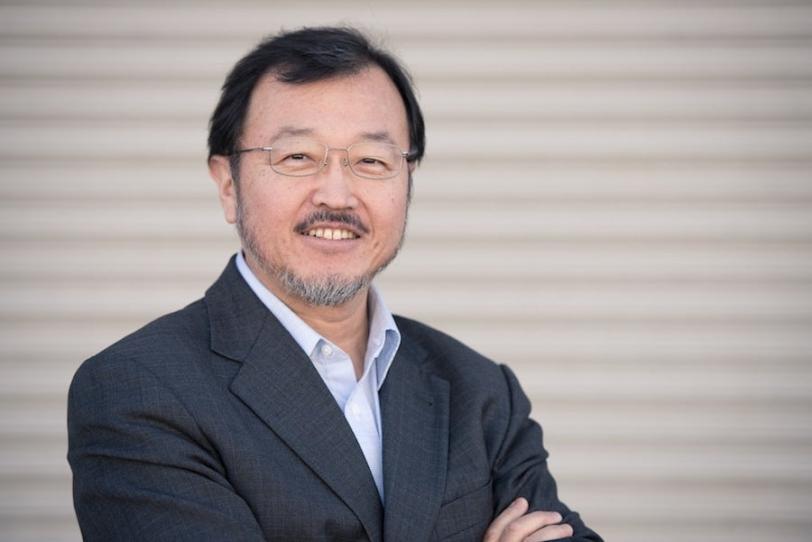Soichi Wakatsuki Joins SLAC Faculty
One of SLAC’s newest faculty members, Soichi Wakatsuki, says it was not any one thing that drew him here to help build and lead the lab’s biosciences program.
By Glennda Chui
One of SLAC’s newest faculty members, Soichi Wakatsuki, says it was not any one thing that drew him here to help build and lead the lab’s biosciences program. Rather it was many things: SLAC’s cutting-edge X-ray facilities, the Linac Coherent Light Source and Stanford Synchrotron Radiation Lightsource; the future potential for developing the world’s most powerful synchrotron, PEP-X, on site; and the prospect of forging strong collaborations with researchers at Stanford University, where Wakatsuki holds a joint appointment at the School of Medicine.
“This combination of things, nobody else can match,” he said last week. “I’m really enjoying it.”
Wakatsuki arrived on campus in early January from the High Energy Accelerator Research Organization (KEK) in Japan, where he directed the Photon Factory, an X-ray science facility similar to SLAC’s SSRL. He is a professor of Photon Science at SLAC and of Structural Biology in the Stanford School of Medicine.
Already he’s been working with SLAC scientists on a promising new technique for improving the X-ray laser beam in a way that could greatly benefit structural biology research. “In the last 18 days I had tremendous fun with the machine physicists, particularly Claudio Pellegrini and his team,” Wakatsuki said with a grin. “This is really exciting. I can’t sleep when I think about this.”
He is also co-chairing a working group that’s developing a strategy for using LCLS for innovative new approaches to bioimaging by combining the capabilities of three directorates – LCLS, SSRL and Photon Science – and working collaboratively with researchers from other national labs and universities.
“We are extraordinarily happy to have brought Soichi here to SLAC,” said SLAC Director Chi-Chang Kao. “His leadership and experience in bioscience – from carrying out important research to mentoring the next generation of scientists and developing the next generation of technology for exploring life’s molecular machinery – are a perfect fit for SLAC as we grow our capabilities and scientific programs in this critical area.”
SLAC’s Senior Associate Dean and Professor Keith Hodgson, who supervised Wakatsuki’s Ph.D. studies at Stanford, said the hallmark of his unique career has been his ability to combine expertise in pure science with a knack for developing the instruments and technology needed to carry out the research.
“Not many people blend those together in a creative way,” Hodgson said. “He’s one of the few people in the world who do that exceptionally well.”
Wakatsuki began his studies in chemical engineering at the University of Tokyo, earned a Ph.D. in the Stanford Chemistry Department in 1991 and, following postdoctoral studies at Oxford, went to the European Synchrotron Radiation Facility in Grenoble, France. There he built up the program in macromolecular crystallography – a technique for using X-rays to analyze the structures of proteins and other large, complex molecules. These structural biology studies are critical for understanding the fundamental processes of life and finding the causes and treatments for disease.
In 2000, Wakatsuki joined the faculty of the Photon Factory at KEK, and became director in 2006. There he led a major upgrade of the facility and its equipment, championed the development of a next-generation light source and led national initiatives in protein research.
Research at the LCLS, he said, has demonstrated that scientists can use powerful X-ray laser beams to decipher the structures of crystallized proteins by collecting data in the fraction of a second before radiation destroys the sample. “This really has changed the whole equation,” Wakatsuki said, opening up the possibility of understanding important protein complexes – such as the ones that carry out photosynthesis – that were difficult if not impossible to study before. Scientists are refining that technique, called femtosecond serial crystallography, and developing new tools to improve the study of proteins and other biological molecules at the atomic level.
But when it comes to biological processes, it’s also important to step back and see the big picture, Wakatsuki said. “We need to see how things move around inside our body,” he said: How a drug molecule moves from the bloodstream into a cell, and then into a particular organelle within the cell, and then into a specific part of that organelle where it can find its target and go to work.
To do this, scientists will need to integrate a number of techniques, such as electron microscopy, nuclear magnetic resonance (NMR), and atomic force microscopy (AFM), with the tools of X-ray science. “My dream is to bring in these techniques and make one platform” that can be used to study basic life processes and design drugs to target specific diseases, Wakatsuki said.
Another dream, he said, is to make researchers on Stanford's main campus more aware of the rich resources available to them at SLAC.
“There is a combination of facilities here that many students and faculty on campus are not aware of,” he said. “This is a missing link I want to bridge between the two parts of the Stanford campus and develop into a few programs. There is a huge and tremendous opportunity to collaborate,” for both intellectual interaction and the development of technology that allows the collaborators to reach their scientific goals.
In his spare time, Wakatsuki said he hopes to spend time with his family exploring Bay Area art, architecture, music and dance. He met his wife, Hitoka, in a small local orchestra – she plays violin, he plays violin and viola – and his daughters, 11 and 8, study ballet. His 19-year-old son will remain in Japan, where he is studying architecture.
“It’s going to be very exciting for us to be back here with the kids,” Wakatsuki said, “and starting a new life.”
